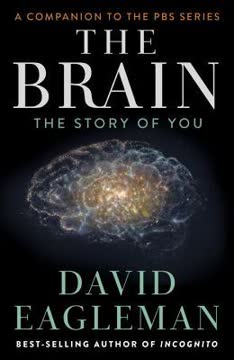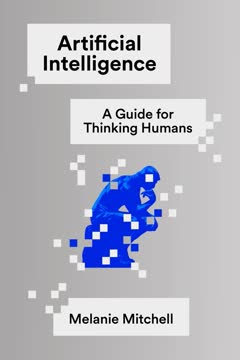Key Takeaways
1. Action's Core: Life, Death, and Excitement
Paradoxical as it may seem, this duality of danger and safety, the simultaneity of risk and glee, creates the core emotion of Action: excitement.
Core value is Life/Death. Every Action story, from ancient epics to modern blockbusters, pulses with the fundamental struggle for survival. Without the imminent threat of extinction, the narrative loses its essential meaning and energy, becoming mere choreography. This core value electrifies the telling, driving characters to fight for one more breath.
Excitement is the feeling. Unlike the terror of Horror or the suspense of Crime, Action engenders excitement in the audience. This unique emotion arises from witnessing characters navigate extreme danger from a safe distance, much like the thrill of a roller coaster ride. The hero's courageous struggle against lethal threats delights us, allowing us to vicariously experience peril without real risk.
Values power emotion. Story values, like Life/Death, are dynamic contradictions that fuel the deepest emotions. As these values shift from positive to negative and back, characters win, lose, suffer, and survive, propelling events forward. Without a clear value pulsating through the narrative, events feel meaningless and emotions dissolve into indifference.
2. The Essential Action Triad: Hero, Villain, Victim
These characters—hero, villain, victim—represent three opposing drives within every human being—the will to triumph, the impulse to destroy, and the hope to survive.
Core roles are Hero, Villain, Victim. The Action Genre is built upon this fundamental triangle of moral archetypes. The hero embodies altruism, willing to sacrifice for others; the villain embodies narcissism, sacrificing others for self; and the victim embodies vulnerability, needing rescue. These contrasting spirits define their relationships and drive the central conflict.
Roles reveal true character. While characterization describes outer appearances, true character is revealed through choices made under pressure. In Action, the greater the jeopardy, the truer the choice, exposing whether a character is moral, courageous, or altruistic. The hero's self-sacrificing instinct places them at the story's center of good, drawing audience empathy.
Villainy is narcissism. Action villains are driven by self-obsession and a belief in their own righteousness, even when their actions are clearly immoral. Unlike Horror monsters who seek pain for pleasure, Action villains use violence as a means to achieve their grandiose schemes. Their vanity and belief in their own superiority make them fascinating antagonists, counterpointing the hero's altruism.
3. The Villain's Plan Drives the Action Story
The excellence of an Action tale, therefore, ties directly to the quality of the villain and the intense brilliance of his scheme.
Villain initiates conflict. Heroes react; villains act. The Action Plot's inciting incident is triggered by the villain's action, compelling the hero to respond. The villain's scheme, often mysterious and disruptive, provides the through-line for the story, driving events until the hero's climactic action ends it.
Plan must be compelling. A villain's stratagem must be rational, probable, dangerous, rewarding, and character-specific. It cannot rely on coincidence and must have a high probability of success if the hero weren't involved. The more astounding and unique the villain and their plan, the more resourceful and ingenious the hero and the storytelling must become.
Secrets enhance menace. A transparent plan makes a villain predictable and less threatening. Mysterious schemes, on the other hand, increase menace and surprise. The villain's secret, when revealed, must powerfully impact events, building conflict and spinning the story in a new direction, not just providing minor exposition.
4. Power Imbalance Fuels Action Conflict
The extent to which a character becomes intellectually fascinating and emotionally compelling depends on the negative forces that block her from getting what she wants.
Antagonism is essential. Conflict is the lifeblood of story. In Action, the hero and villain define each other through their opposing natures and powers. The villain's overwhelming power crushing the hero's last reserves creates the apex of antagonism, forcing the hero to reach for deeper resources.
Hero is the underdog. Action casts the hero as an underdog to generate empathy and suspense. Audiences identify with the struggle against overwhelming odds, mirroring their own life challenges. This imbalance keeps the audience questioning how the hero will succeed, even if they expect a positive outcome.
Villain is the overdog. Weak antagonists lead to boring stories. The villain must wield enormous power, often institutional or unique, to create high stakes and excitement. This power disparity, whether physical, social, or psychological, sets the stage for action-filled scenes and triggers adrenaline in the audience.
5. The MacGuffin: The Object of Desire
A MacGuffin is the thing that both hero and villain want, and if either of them gets it, it gives him power over the other.
MacGuffin focuses action. This essential component, popularized by Alfred Hitchcock, is the object or information that drives both the hero's and the villain's pursuit. It can be physical (an artifact), mental (a secret), or even a character (the victim or hero themselves). Control of the MacGuffin determines the outcome of the conflict.
Variety and progression are key. An effective MacGuffin inspires diverse tactical actions and reactions, avoiding repetition. It must also help drive the turning points in an ever-rising progression of danger. To facilitate this, MacGuffins are often portable, lost and found, stolen and traded, increasing variety and risk.
MacGuffin reveals power. While it may start shrouded in mystery, the MacGuffin's power must eventually be demonstrated or described. The more control the villain has over it, the greater the danger for the hero and victim, pushing the villain to the brink of triumph. Complex or multiple MacGuffins can enrich long-form stories but risk confusion if not handled skillfully.
6. Set Pieces: The Peaks of Action Excitement
Set pieces are the arias of Action Stories.
Set pieces merge tension and kinesis. These are the high points of Action, combining proximity to danger (tension) with vivid sensory stimulation (kinesis) to generate excitement. They are not just fights or explosions but movements that express the deepest truths of heroism and villainy. Audiences often judge an Action story by the quality of its set pieces.
Movements define set pieces. A set piece drives the hero in specific directions relative to danger: moving toward it, moving away from it, rescuing a victim, scrambling for the MacGuffin, or confronting the villain. These movements can be combined and varied endlessly to create dynamic scenes.
Obstacles reveal character. Within each set piece, the hero faces obstacles and limitations that test their ingenuity, perseverance, and willpower. Their choices and actions under pressure reveal previously unseen qualities, delineating character without relying on exposition or dialogue. Well-designed set pieces transform generic scenes into unique, compelling moments.
7. Pace and Progression Build Thrills
An Action writer conducts a story by harmonizing these three qualities into scenes, sequences, and set pieces that forge ahead—never repeating, never digressing, always building excitement to climax.
Rhythm, tempo, intensity. An Action story pulses with rising tension, orchestrated through the length and spacing of scenes (rhythm), the energy within scenes (tempo), and the proximity to danger (intensity). Harmonizing these elements creates a compelling flow that builds excitement towards the climax.
Progression over repetition. Interest deepens as scenes quicken and intensity rises, capped by major set pieces. Repeating the same movements or value charges drains interest and kills excitement. Varying set piece movements, crosscutting between parallel actions, and shifting tonal gears prevent repetition and maintain dynamic progression.
Modulating intensity is key. Excitement intensifies as the hero gets closer to death, values multiply, stakes progress, villainy deepens, and risk becomes polarized (all-or-nothing). Techniques like shortening distance to danger, combining values, increasing what's at risk, revealing deeper villainy, and creating time constraints modulate intensity and keep the audience on the edge of their seat.
8. Depth and Breadth Add Meaning and Impact
All coherent stories express one irreducible meaning: how and why life changes.
Meaning through events. Action stories express meaning not through dialogue explaining ideas, but through the design of events and the forces of cause and effect. The story's truth is revealed in the climax, prompting the audience to connect the dots and understand the hows and whys of what happened. Meaning in Action is visceral, exploring how and why life continues or terminates.
Emotion through empathy and change. Beyond core excitement, specific emotions surge as audiences react to turning points. Empathy with the hero allows audiences to feel the shifts in value charges (Life/Death, Justice/Injustice, etc.). Alternating positive and negative transitions keeps emotions alive, while repetition diminishes their effect, following the law of diminishing returns.
Image systems deepen impact. To strengthen impact, Action stories can use image systems – repeating categories of imagery (machinery, animals, weather) that relate to characters and conflicts. These images work subconsciously, concentrating ideas and emotions into symbols that invade the mind and intensify the experience without being overtly explained.
9. Action's Diverse Subgenres and Combinations
These four subgenres are endlessly malleable, merging and mixing in yet-to-be-imagined ways.
Subgenres focus conflict. Action's general question, "Will the hero defeat the villain?", is refined by its four subgenres, which focus on the villain's source of power: nature (Action Adventure), institutions (Action Epic), individuals (Action Duel), or time (Action Thriller). This choice shapes the story's spine and audience expectations.
Intra-subgenres add variation. Each subgenre contains four intra-subgenres, further sculpting the source of conflict. For example, Action Adventure includes Disaster, Monster, Doomsday, and Labyrinth plots, each casting nature in a different role (villain, institution, victim, weapon). This provides sixteen variations for authors to explore.
Mixing and merging expands possibilities. Action can mix with other principal genres (Crime, Love, Epic) by crosscutting story lines, or merge by giving Action a deeper motivation (e.g., Love driving the hero's pursuit). Subgenres and intra-subgenres can also mix and merge, creating complex narratives. Balancing these combinations is key to maintaining focus and impact.
Last updated:
Review Summary
Action receives mostly positive reviews for its insightful analysis of the action genre. Readers praise McKee's expertise in storytelling and find the book helpful for writers across various mediums. It's lauded for its concise, practical advice on character roles, plot structure, and pacing. Some criticize it for being overly descriptive or difficult to absorb in one reading. Overall, it's considered a valuable resource for writers, particularly those working in action-oriented narratives, with a few dissenting opinions on its depth and relevance.
Similar Books










Download PDF
Download EPUB
.epub digital book format is ideal for reading ebooks on phones, tablets, and e-readers.








